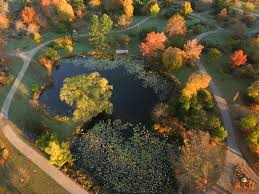
The Top 3 Garden Tillers on the Market
Are you in the market for a new garden tiller? Maybe your old one finally gave out after years of faithful service, or maybe you’re finally taking the plunge and starting that garden you’ve always dreamed of. No matter what your reasons are, you’ll want to make sure you buy a garden tiller that’s up to the task. Here are three of the best on the market today.
1. Mantis 4-Cycle Tiller/Cultivator
If you’re looking for a lightweight yet powerful tiller, look no further than the Mantis 4-Cycle Tiller/Cultivator. This little machine weighs in at only 24 pounds, but don’t let its size fool you—it’s more than capable of handling even the toughest gardening jobs. The Mantis is also easy to operate; its ergonomic design means that you won’t have to struggle with it, even if you’re tilling a large area. And when you’re finished, it stores away easily in a shed or garage.
2. Troy-Bilt TB146 EC 29cc 4-Cycle Cultivator
The Troy-Bilt TB146 EC 29cc 4-Cycle Cultivator is a great choice if you need a bit more power than the Mantis can provide. It’s a bit heavier at 34 pounds, but that extra weight is due to its larger engine; the TB146 can till up to 18 inches wide, making it ideal for larger gardens. It’s also easy to start; just push a button and go. And like the Mantis, it’s backed by a 2-year warranty.
3. Earthquake MC43 One Man auger Powerhead
For really big jobs, you’ll need a heavy-duty tiller like the Earthquake MC43 One Man auger Powerhead. This bad boy can till up to 43 inches wide, making short work of even the largest gardens. It’s also packed with features like an easy-start engine and an adjustable depth control lever, so you can tailor it to your specific needs. And at just under $200, it’s surprisingly affordable for such a powerful machine.
No matter what your gardening needs are, there’s a garden tiller out there that’s perfect for you. Do some research and find the one that fits your needs the best—you’ll be glad you did when spring rolls around and your garden is flourishing.
What is the highest rated garden tiller?
- Best Adjustable Depth Option: Sun Joe 12-Inch 8-Amp Electric Rototiller.
- Most Versatile Option: LawnMaster 16-Inch 10-Amp Electric Tiller.
- Battery-Powered Model with the Best Charge: Sun Joe Cordless Garden Rototiller.
- Best Overall Battery-Powered Option: Greenworks 40V 10-inch Cordless Cultivator.
What type of tiller is best? While electric tillers are easy and affordable, the tradeoff is that they’re less powerful, so if you need a tiller that can do a big job quickly, then a gas tiller is usually the better choice. You’ll have to put a little more work and money into using it, but you’ll save yourself time and energy as a result.
Who makes the best rotary tiller?
Best Rotary Tiller for Tractor in 2022
- Farmer Helper.
- Titan Attachments. This is also a Chinese brand that specializes in producing high-quality equipment.
- King Kutter. While the Titan Attachment works best with heavy-duty tractors, the best heavy-duty tiller is King Kutter.
- Everything Attachment YJC052.
- Value Leader.
Which is better front or rear tiller? Rear tine tillers are considered stronger, can turn the soil deeper, are better suited for creating new beds thoroughly, can chomp through tougher and rocky ground and work on larger areas faster due to being wider.